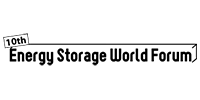 In our previous article, we covered how technology costs aren’t yet low enough for energy storage to be economically viable as standalone projects, and some of the innovative ways developers are using to overcome these limitations. Here we’ll flesh out one of the more attractive – yet elusive – options: revenue stacking.
In our previous article, we covered how technology costs aren’t yet low enough for energy storage to be economically viable as standalone projects, and some of the innovative ways developers are using to overcome these limitations. Here we’ll flesh out one of the more attractive – yet elusive – options: revenue stacking.
Mentions of revenue stacking frequently crop up in energy storage publications and in our own interviews, but why does it appeal so much? It’s simple. When making a business case for a new project and examining all the potential sources of revenue one could think “Why not offer many of these services, increase our revenue and diversify our income stream?”
If this sounds simplistic and too good to be true to you, you’re absolutely correct.
Most obviously, some revenue streams are not suitable for stacking, with different and even opposing technical requirements for optimum operation – frequency response and arbitrage, for example. Even for applications where operational requirements are more closely aligned, there’s a real risk of being forced into a solution that is average for every application rather than great for one.
Another challenge is that regulation still lags behind energy storage advancements. Existing revenue streams are subject to complex regulatory policies, which again, can inhibit or oppose one another. The restrictions in most countries, such as the UK, as to who can own and operate energy storage assets make co-ordinating grid-level applications difficult.
While there is no question that current regulations are outdated for today’s energy storage landscape, it is equally true that regulation changes can be introduced rapidly – for example, last week’s announced change in Capacity Market de-rating factors. The future is inherently uncertain, characterised by rapidly falling technology costs, saturated markets, planned regulatory changes and changing contract lengths. Accurate forecasting is a risky business for one revenue stream, let alone three, or six.
So does this mean that the benefits of revenue stacking should be discounted? We think not, and we can look to successful examples to see who is making it work, and how:
Don’t take on too much: There are far more successful examples focusing on two or three complimentary revenue streams than four/five. Fewer variables mean more accurate forecasting and better optimisation. An example of this strategy include solar plus storage “virtual power plants”, which receive income from direct energy consumers as well as for grid ancillary services.
Click Here to Read Full Article
read more




